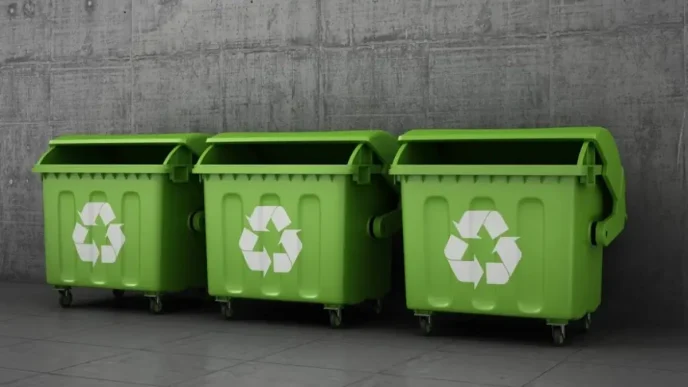In Jakarta, a slight uptick in consumer confidence offers a glimmer of hope for Indonesia’s economy, as households express optimism about the future despite ongoing pressures on current conditions. The central bank’s latest survey reveals a complex picture of resilience and concern, with implications for economic growth in the second half of 2025.
A Cautious Optimism Emerges
Bank Indonesia (BI) reported that its Consumer Confidence Index (CCI) rose marginally to 118.1 points in July 2025, up from 117.8 points in June. While the index remains below the 120-point mark it last crossed in April, the incremental improvement signals a shift in public sentiment, driven primarily by brighter expectations for the next six months. According to a press statement from BI, this uptick reflects growing consumer optimism about future economic prospects, even as perceptions of the present remain subdued.
The consumer expectations subindex, which gauges how respondents view the economy over the coming half-year, climbed to 129.6 points from 128.9 points in June. This measure encompasses expectations for income, job availability, and business activity. Of these, income expectations showed the most significant improvement, with respondents across all five income groups surveyed anticipating better earnings. Job expectations also edged up slightly, though business activity forecasts saw a notable decline, tempering the overall positive outlook.
In contrast, the subindex tracking current economic conditions dipped to 106.6 points in July from 106.7 points the previous month. This component reflects perceptions of current income, job availability, and durable goods purchases. While job availability and durable goods purchases recorded slight increases, current income saw a modest decline, with most income groups reporting little to no improvement in their financial situation. Notably, durable goods purchases surged among respondents over 60, hinting at targeted spending in specific demographics.
Employment and Income Challenges Persist
Despite the forward-looking optimism, immediate economic pressures continue to weigh on Indonesian households. Job availability, a critical indicator of economic health, remains below the 100-point threshold that separates optimism from pessimism—a trend that has persisted since May 2025. Among the four education groups surveyed, high school diploma holders expressed the deepest pessimism, consistently scoring below 100 points for several months. Bachelor’s degree holders, while dipping into pessimistic territory in June, maintained a more hopeful stance regarding future expectations.
Permata Bank chief economist Josua Pardede highlighted the duality of the current economic sentiment. He noted that while overall spending power has held steady and short-term economic prospects appear stronger, weak perceptions of job availability pose a challenge. “The implication is if this optimistic trend persists, household spending could potentially become the main pillar of economic growth in the second half of 2025” Pardede told a local outlet on August 9, 2025. However, he cautioned that employment struggles and a declining savings ratio could undermine the sustainability of consumption and household financial stability in the medium term.
The survey also revealed a drop in the savings-to-income ratio, which fell to 13.7 percent in July from 14.1 percent in June. This decline suggests that households may be dipping into reserves to maintain spending levels, a trend that could limit economic resilience if not addressed.
Household Spending Fuels GDP Growth
Indonesia’s economic performance in the second quarter of 2025 provides context for the consumer confidence data. Statistics Indonesia (BPS) announced on August 5 that gross domestic product (GDP) grew by 5.12 percent year-on-year, surpassing market expectations of 4.8 percent. Household spending, which constitutes the largest share of GDP, rose by 4.97 percent year-on-year in the quarter, a slight increase from 4.95 percent in the first quarter. This growth was partly attributed to a consumer stimulus package introduced during the school holiday period, which included discounted transportation fees to encourage spending.
The boost in household expenditure underscores its role as a key driver of economic expansion, particularly amid fluctuating external demand. However, analysts warn that sustaining this momentum will require addressing underlying constraints such as employment challenges and declining savings. A report from SSI Research’s macro strategy team on August 9, 2025, pointed to a divergence between forward-looking optimism and current pessimism, noting that immediate pressures like rising living costs and sluggish wage growth continue to limit consumer behavior.
The SSI team predicted that the CCI would likely remain in positive territory through the second half of 2025, supported by a rebound in manufacturing, fiscal stimulus measures, and seasonal spending increases ahead of year-end holidays. They also cited a stable labor market and moderate inflation as factors bolstering sentiment. However, they warned that currency volatility, global trade uncertainties, and slow real wage recovery could cap upside potential in the near term.
Balancing Optimism with Structural Issues
The latest consumer confidence data paints a picture of an Indonesian economy at a crossroads. On one hand, households are buoyed by hopes of better income and economic conditions in the near future, as evidenced by the rising expectations subindex. This optimism aligns with broader economic indicators, such as the stronger-than-expected GDP growth in the second quarter, which suggests that government initiatives like consumer stimulus packages are bearing fruit.
On the other hand, the persistent weakness in current conditions—particularly around job availability and income—signals that many Indonesians are still grappling with day-to-day financial pressures. The fact that job availability remains in pessimistic territory for several months indicates structural challenges in the labor market that could hinder long-term growth. Moreover, the decline in the savings-to-income ratio raises questions about how long households can sustain spending without risking financial instability.
Analysts at SSI Research emphasized the importance of maintaining consumer spending power to drive Indonesia’s economic momentum. “As such, maintaining consumer [spending] power will be key to sustaining Indonesia’s economic momentum, particularly amid shifting external demand conditions” their analysis concluded. This perspective underscores the need for targeted policies that address employment and wage growth, alongside efforts to bolster consumer confidence through fiscal measures.
Regional and Global Context
Indonesia’s economic trajectory is not unfolding in isolation. Across Southeast Asia, countries are navigating similar challenges of balancing domestic consumption with external uncertainties. In neighboring Malaysia and Thailand, consumer confidence has also shown mixed signals, with households expressing cautious optimism amid rising costs and global trade disruptions. For Indonesia, the reliance on household spending as a growth engine mirrors trends in the region, where domestic demand often serves as a buffer against volatile export markets.
Globally, the outlook remains uncertain, with potential headwinds from currency fluctuations and geopolitical tensions. Indonesian policymakers will need to remain vigilant, ensuring that domestic stimulus measures are complemented by efforts to stabilize the rupiah and secure trade partnerships. The interplay between these factors will likely shape consumer sentiment in the months ahead, influencing whether the current uptick in confidence can translate into sustained economic progress.
Looking Ahead
As Indonesia moves into the latter half of 2025, the slight improvement in consumer confidence offers a tentative sign of recovery. Yet, the gap between future expectations and current realities highlights the fragility of this optimism. Policymakers face the dual task of nurturing household spending while addressing structural issues like employment and savings. Whether these efforts will solidify consumer trust and drive broader economic growth remains an open question, one that will define Indonesia’s path in an increasingly complex global landscape.















